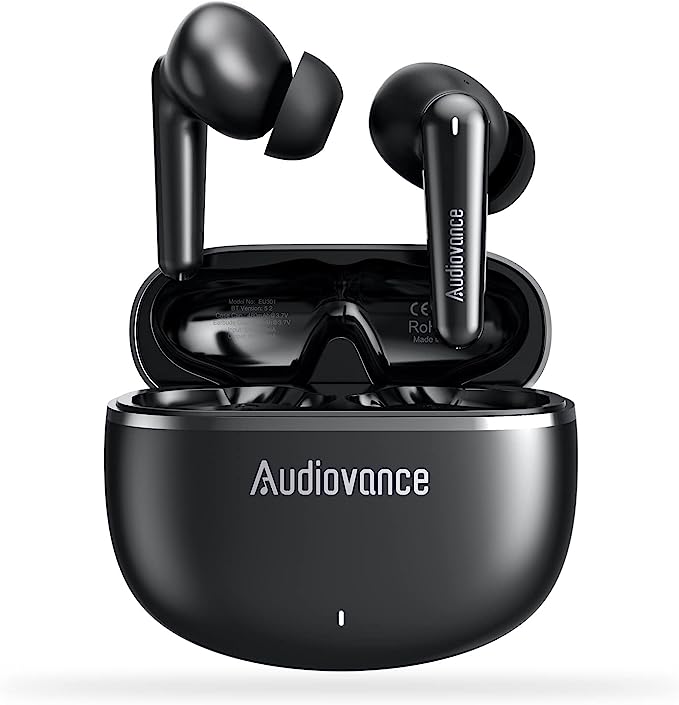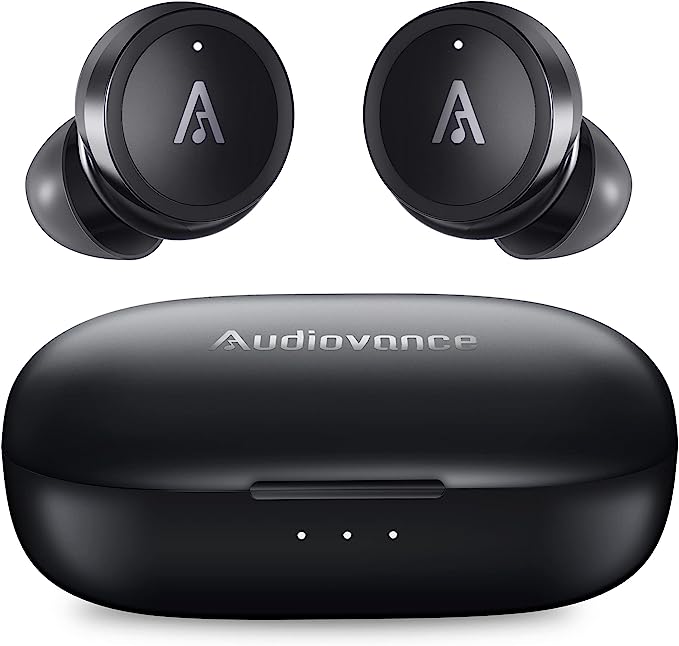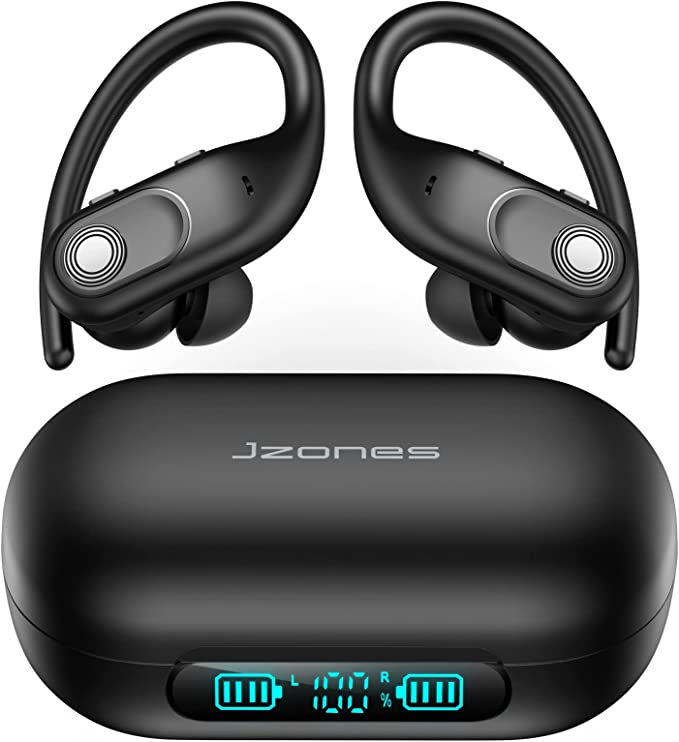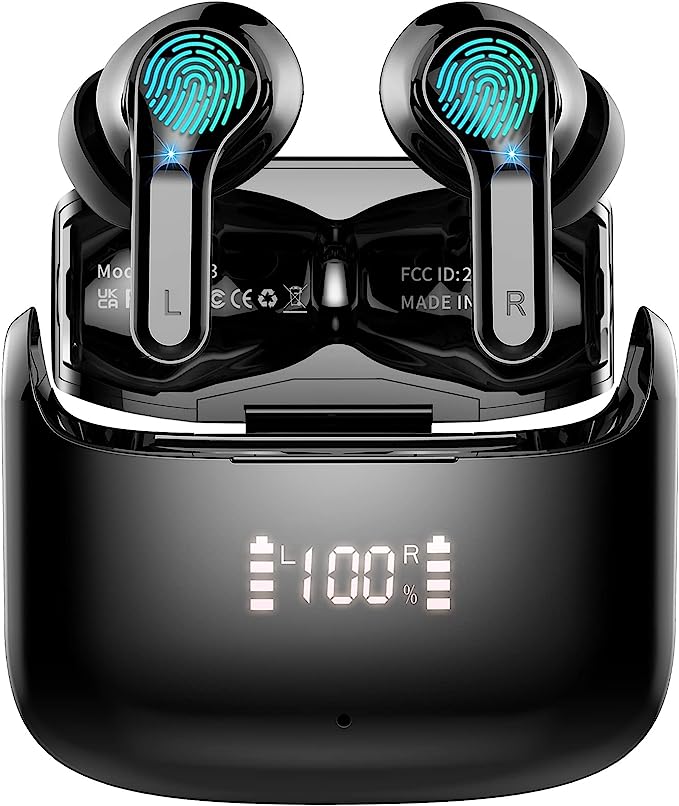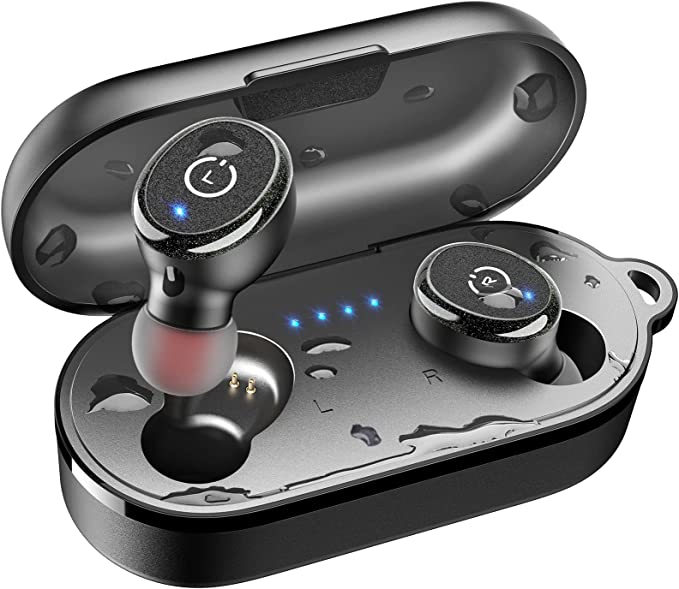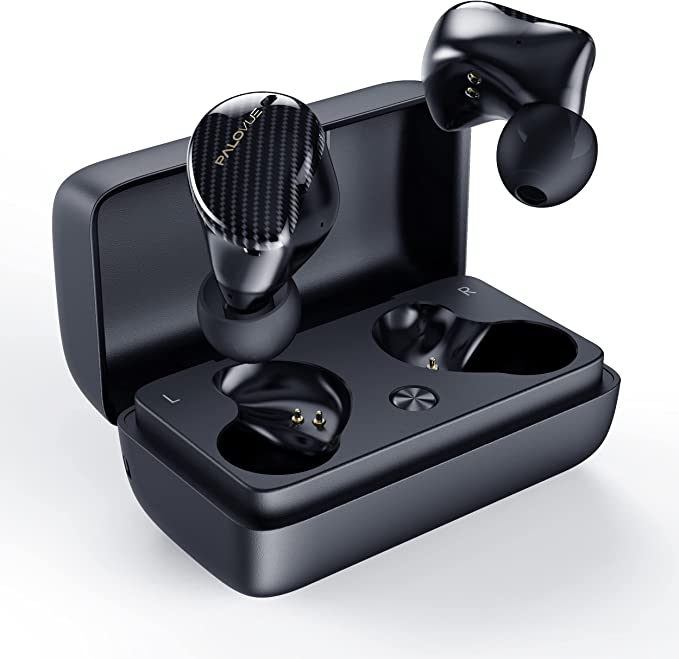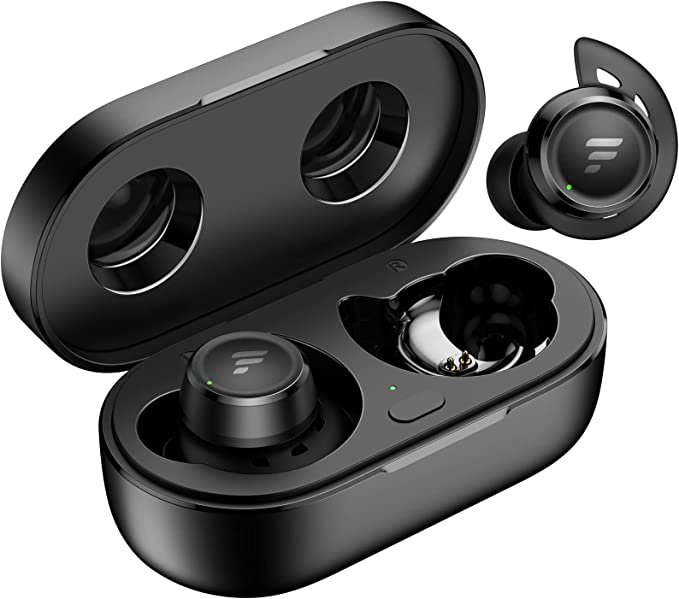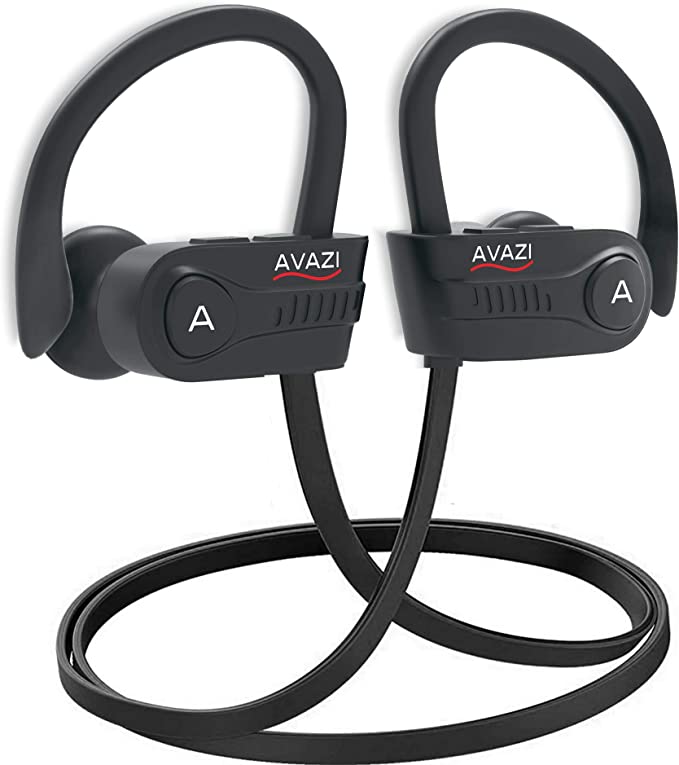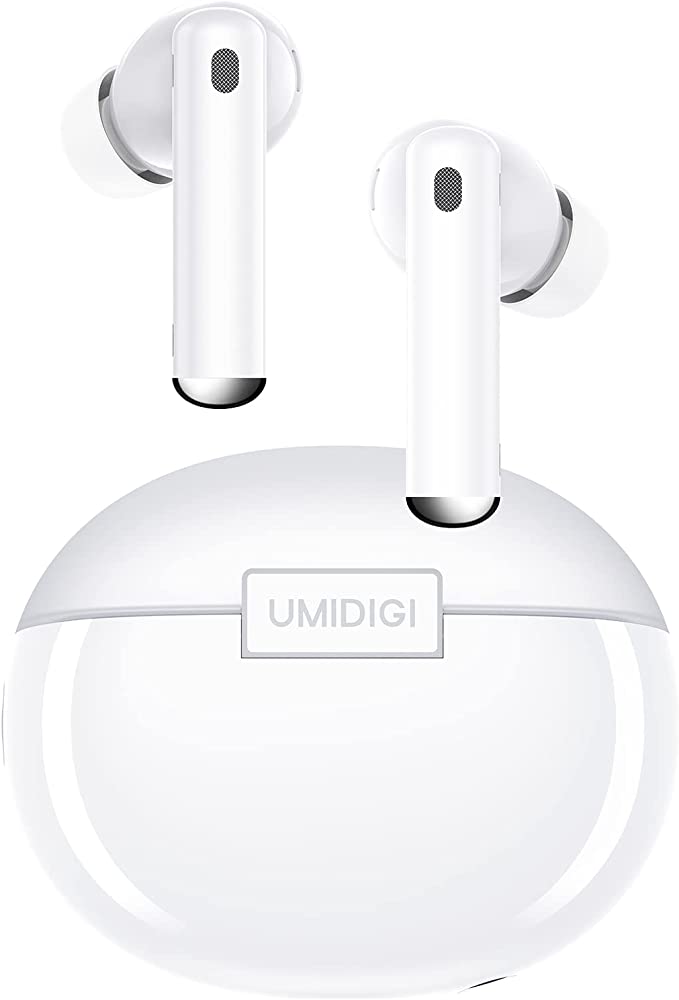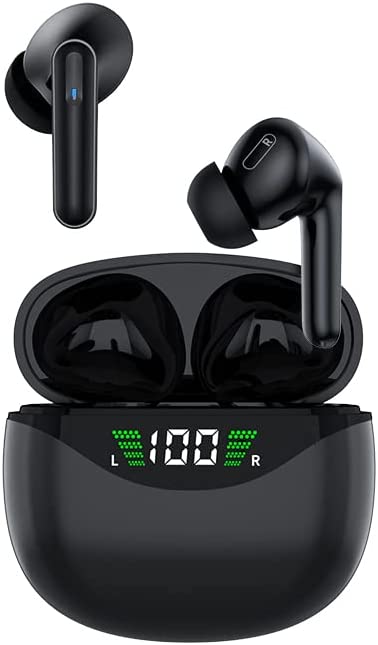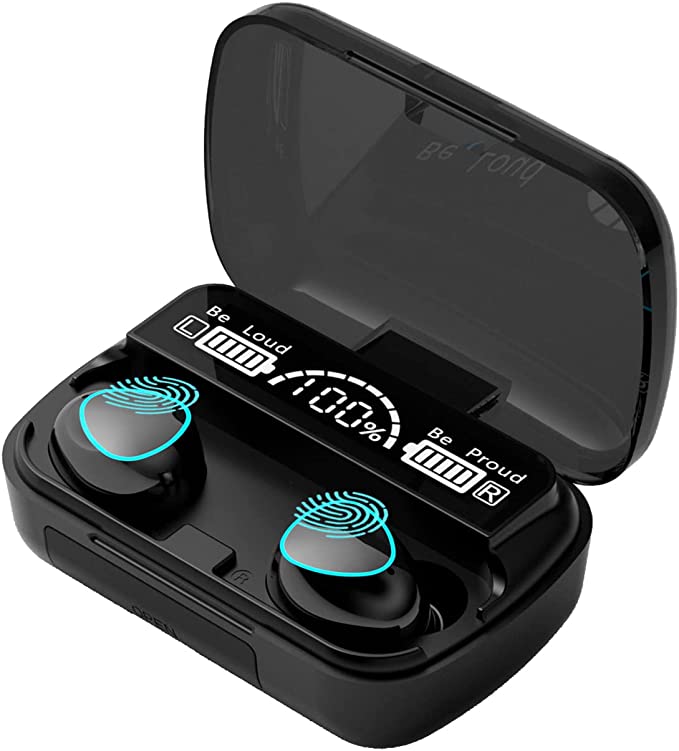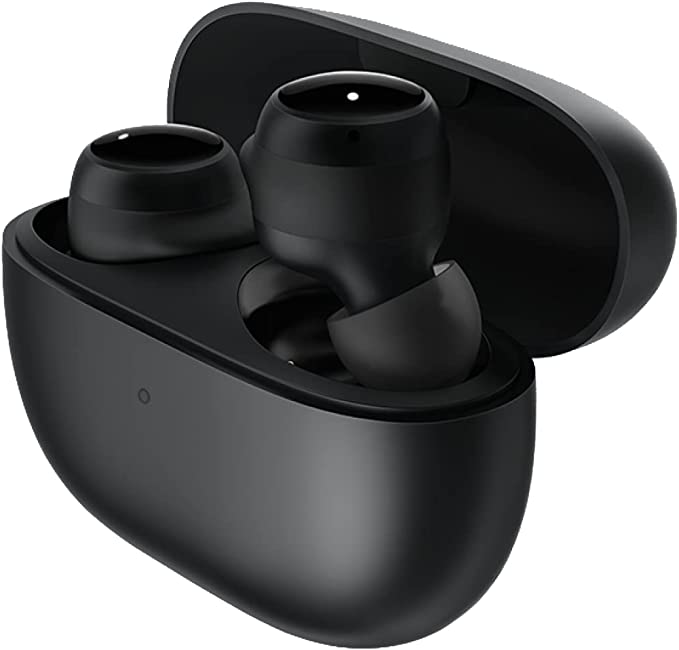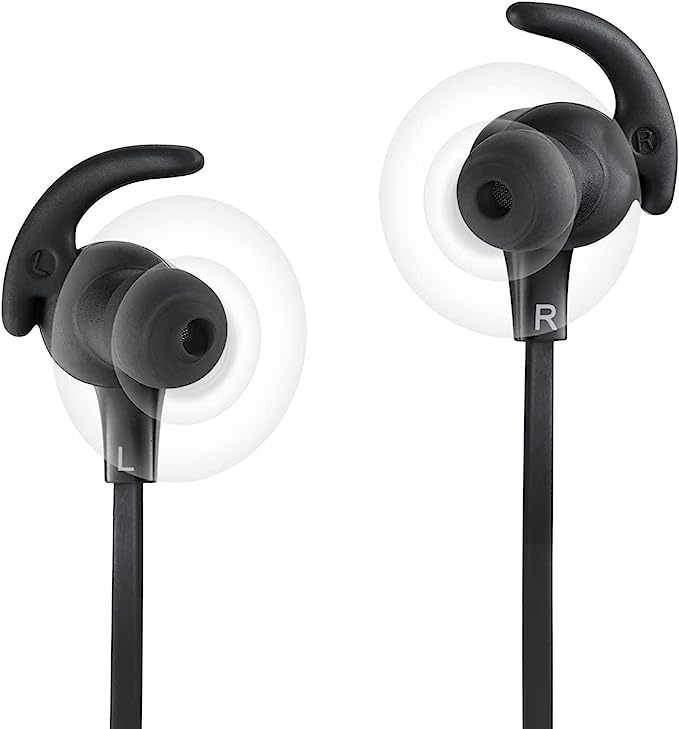Audiovance Infinit 501 Wireless Earbuds: Your Personal Oasis of Sound
Update on Feb. 22, 2025, 8:31 a.m.
The Pervasive Problem of Noise
We live in a world saturated with sound. From the gentle hum of a refrigerator to the roar of city traffic, our ears are constantly bombarded with auditory information. While some sounds are pleasant and even essential, many are unwanted and intrusive – what we call noise. Noise pollution isn’t just an annoyance; it can impact our concentration, sleep, and even our overall health. Prolonged exposure to loud noises can contribute to stress, anxiety, and even hearing loss. The ability to control the sounds we hear, to create moments of peace and quiet, has become increasingly valuable.

What is Sound, Really?
Before we dive into the technology that combats noise, it’s helpful to understand what sound actually is. At its most basic, sound is a vibration that travels through a medium, such as air, water, or solids. These vibrations create waves of pressure that propagate outwards from the source. When these pressure waves reach our ears, they cause our eardrums to vibrate, and our brains interpret these vibrations as sound.
These sound waves have two key characteristics: frequency and amplitude. Frequency refers to the number of vibrations per second, measured in Hertz (Hz). Higher frequencies correspond to higher-pitched sounds (like a whistle), while lower frequencies correspond to lower-pitched sounds (like a bass drum). Amplitude refers to the intensity or strength of the vibration, which we perceive as loudness. The larger the amplitude, the louder the sound.

The Human Hearing Range
The human ear is a remarkable instrument, but it has its limitations. We can typically hear sounds within a frequency range of 20 Hz to 20,000 Hz (20 kHz). This range can vary slightly from person to person and tends to decrease with age. Sounds below 20 Hz are called infrasound, and sounds above 20 kHz are called ultrasound. While we can’t hear these sounds, they can still have physical effects.

The Science of Silence: Active Noise Cancellation
This is where Active Noise Cancellation (ANC) technology comes in. ANC is a sophisticated method of reducing unwanted sound by generating a second sound that specifically cancels out the first. This isn’t simply masking the noise; it’s eliminating it at the source.
The core principle behind ANC is destructive interference. Imagine two identical waves, perfectly aligned. If you add these waves together, they reinforce each other, creating a larger wave (this is constructive interference). Now, imagine shifting one of those waves by half a cycle. The peaks of one wave now align with the troughs of the other. If you add these waves together, they cancel each other out, resulting in silence.
ANC earbuds, like the Audiovance Infinit 501, achieve this by using tiny microphones to “listen” to the ambient noise around you. This noise signal is then processed by an internal circuit, which generates an “anti-noise” wave that is exactly 180 degrees out of phase with the original noise. This anti-noise is then played through the earbuds’ speakers. When the original noise wave and the anti-noise wave meet, they destructively interfere, effectively cancelling each other out.
Types of ANC
There are a few different approaches to ANC:
- Feedforward ANC: Microphones are placed on the outside of the earcups. This allows them to detect the noise before it reaches your ear. Feedforward systems are generally better at cancelling out higher-frequency sounds.
- Feedback ANC: Microphones are placed inside the earcups, close to the ear. This allows them to monitor the sound that actually reaches your ear, making them more effective at cancelling out lower-frequency sounds.
- Hybrid ANC: This combines both feedforward and feedback approaches, using microphones both inside and outside the earcup. This provides the most comprehensive noise cancellation across a wider range of frequencies. The Audiovance infinit 501 utilizes a form of ANC to reach a 35dB reduction.
Transparency Mode: Staying Connected
While ANC is excellent for blocking out distractions, there are times when you need to be aware of your surroundings. This is where Transparency mode comes in. Transparency mode uses the same external microphones used for ANC, but instead of generating an anti-noise signal, it amplifies the ambient sound and plays it through the earbuds’ speakers. This allows you to hear conversations, traffic noises, and other important sounds without having to remove your earbuds. It’s a crucial feature for safety and convenience, particularly in situations where situational awareness is important, like walking or cycling in a busy environment.
Beyond ANC: Other Key Technologies in the Audiovance Infinit 501
The Audiovance Infinit 501 isn’t just about noise cancellation. It incorporates several other technologies that contribute to its overall performance and user experience.
-
Bluetooth 5.2: Connectivity and Codecs: Bluetooth is the wireless communication standard that allows the earbuds to connect to your phone, tablet, or computer. Bluetooth 5.2 is the latest version, offering several advantages over previous versions, including faster pairing, more stable connections, lower power consumption, and improved data transfer rates. This translates to a more reliable connection with fewer dropouts and better audio quality.
The quality of the audio transmitted over Bluetooth also depends on the codec used. A codec is essentially a software algorithm that compresses and decompresses the audio signal. The Infinit 501 supports the standard SBC (Subband Coding) codec, which is universally compatible with Bluetooth devices. It also supports AAC (Advanced Audio Coding), a more advanced codec commonly used by Apple devices, which offers better sound quality than SBC at similar bitrates.
-
CVC Call Noise Cancellation: Digital Signal Processing (DSP): Clear communication is just as important as clear audio. The Infinit 501 features four microphones and CVC (Clear Voice Capture) technology to enhance call quality. CVC uses Digital Signal Processing (DSP) to filter out background noise and enhance your voice during calls. DSP is a powerful technique used in many audio applications to manipulate and improve sound signals. It involves complex mathematical algorithms that can analyze and modify audio in real-time. In the case of CVC, the DSP algorithms identify and suppress unwanted sounds, such as wind noise or traffic, while preserving the clarity of your voice.
-
IPX5 Water Resistance: Protection from the Elements: An IPX5 rating means that the Infinit 501 earbuds are protected against water jets from any direction. This makes them suitable for use during workouts, where sweat can be a concern, and in light rain. It’s important to note that IPX5 does not mean the earbuds are fully waterproof; they should not be submerged in water.
-
Driver Technology: How the Sound is Produced: The driver is the component within the earbud that actually produces the sound. It’s essentially a tiny loudspeaker. The Infinit 501 uses a 10mm dynamic driver. Dynamic drivers are the most common type of driver found in headphones and earbuds. They work by using a diaphragm that is attached to a voice coil. When an electrical signal is passed through the voice coil, it creates a magnetic field that interacts with a permanent magnet, causing the diaphragm to vibrate and produce sound. The 10mm size of the driver in the Infinit 501 suggests that it is capable of producing a good balance of bass, mids, and highs. The frequency response of 20Hz-20kHz which means it can produce the full range of sound the human ear can hear.
The Importance of a Good Fit
Even the most technologically advanced earbuds will sound poor if they don’t fit properly. A good fit is crucial for both comfort and sound quality. A secure seal between the ear tip and the ear canal is essential for effective noise cancellation and optimal bass response. The Infinit 501 comes with three sizes of ear tips (S, M, L) to help users achieve a comfortable and secure fit. Experimenting with different ear tip sizes is recommended to find the best fit for your ears.
Conclusion: The Value of a Peaceful Soundscape
In our increasingly noisy world, the ability to control the sounds we hear is more important than ever. Active Noise Cancellation technology, as implemented in the Audiovance Infinit 501 wireless earbuds, offers a powerful tool for creating a more peaceful and productive environment. By understanding the science behind ANC and the other technologies that contribute to a high-quality listening experience, we can appreciate the value of these devices and make informed choices about the audio products we use. The Infinit 501, with its combination of ANC, Transparency mode, clear call quality, and comfortable design, provides a versatile and affordable way to manage the sounds of our daily lives.
